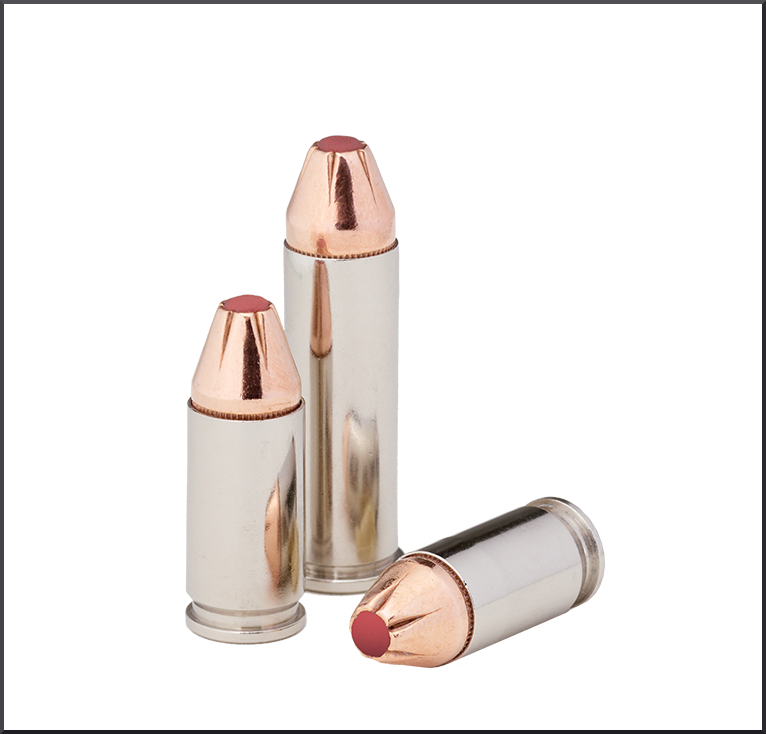If you’re new to all this, there is an overwhelming amount of ammunition options. Team Springfield Armory’s Kyle Schmidt helps sort through them. READ MORE
SOURCE: Team Springfield, Kyle Schmidt
“We hold these truths to be self-evident, that all men are created equal.”
The authors of the Declaration of Independence were brilliant. The wording they used was so profound that it still has a tremendous impact on our lives today.
Sure, all people were created equal – but when it comes to ammunition, not so much.
THE AMMUNITION SPREAD
As a newer shooter, choosing ammunition can be a daunting task. Full-metal jacket, ball, hollow point, wad cutter, round nose, flat point, plated, coated and the list goes on. These terms can seem pretty overwhelming, and these are just common types of pistol bullets.
So, how is a new shooter supposed to know what kind of ammunition to buy?
KEY COMPONENTS
Centerfire pistol and rifle ammunition are made up of four components:
Case
Primer
Powder
Bullet
(NOTE: I often hear people refer to ammunition as a bullet. Although this is generally accepted slang for some, it can be confusing when discussing ammunition. For the purposes of this guide, when referring to a “bullet,” I am referring to the individual component that is a part of a single round of ammunition.)
Generally speaking, the two biggest variables in ammunition come from the powder and the bullet. The type and quantity of powder will predominantly affect the velocity of the bullet. The bullet design has a significant effect on accuracy and performance once the bullet impacts the target.
PURPOSE
When determining what ammunition to choose, the first question to ask is, “What’s it for?”
Ammunition is designed with a variety of purposes in mind — hunting, target shooting, competition, and personal defense among them.
HUNTING & PERSONAL DEFENSE
In general, ammunition made for hunting and personal defense is designed to have a higher velocity, a heavier bullet, and a bullet designed to expand when it strikes the target. Commonly, this type of ammunition is sold in containers of smaller quantities and often comes with a higher price tag. This ammunition generally has more felt recoil, which is more commonly referred to as “kick.”
COMPETITION
Ammunition made for competition is usually designed with the specific requirements of a given type of competition in mind. Some competitions heavily favor extreme accuracy, while others may be more speed-oriented. Because some events require a great deal of accuracy, this may lead to an expensive bullet design and a higher cost. But it’s typically still less expensive than hunting ammunition.
Generally speaking, competition shooters look for ammunition that has less felt recoil. So, keep in mind that many competition shooters modify their guns so they will work with ammunition of different lengths and with ammunition that requires very little energy to function the gun. Be cautious when purchasing ammunition designed for competition, as it may not function all firearms.
TARGET SHOOTING
“Target ammunition” is a general-purpose term. This is the ammunition you might see in bulk packaging at the sporting goods store. The bullets and powder used vary significantly. Unlike competition ammunition, this ammo is generally designed to function a wide variety of firearms reliably but does not have the same high level of felt recoil as the hunting or self-defense ammunition. This ammunition is probably the most common type purchased by the typical shooter for practice. This ammunition also gives shooters the most “bang” for their buck, as it can be the least expensive option.
Most importantly, the ammunition you purchase needs to safely and reliably function the gun.
JUST REMEMBER
When purchasing ammunition, there are a couple of other things to consider before filling your home with a new type of ammo.
Quantity: Start in small quantities when purchasing new ammunition. Most places will not take ammunition back, so if you find out the ammunition does not function your gun and you just purchased thousands of rounds of it, you’ll be stuck with trying to sell it to someone else.
Function: Some guns just don’t like some ammunition. The ammo may work fine in one gun, but cause constant malfunctions in another.
Accuracy: Some bullets shoot better out of some guns than others. Even if you buy the latest, greatest new ammunition that your favorite YouTube video depicted to be the most accurate ammo in the history of galaxy, it may not shoot well out of your barrel. Conversely, you may find that a particular bullet shoots well out of your gun that your know-it-all buddy says is terrible.
Manufacturer: Consider the source. I have seen numerous problems with ammunition over the years, including ammunition that did not have any powder and ammunition that had way too much powder. Occasionally, I have seen ammunition destroy a gun. I have even seen this happen with ammunition from well-known manufacturers. However, they have been responsive when paying for repairs or replacing the gun if needed. That same expectation may not be realistic for the small, garage-based ammunition companies.
ASK YOURSELF…
At the end of the day, the ammo questions you need to ask yourself are:
Will you shoot it?
Does it meet your reliability requirement?
Does it meet your accuracy requirement?
Does it meet your felt recoil requirement?
Does it meet your cost requirement?
If the answer to any of these questions is “no,” you probably shouldn’t purchase the ammo, as you likely won’t enjoy shooting it. If you don’t enjoy shooting it, the ammunition will just stay in the box and you won’t get any practice. If you don’t get any practice, you definitely will not get any better.
And if you don’t get any better, you won’t ever get to experience the great enjoyment that comes from being a competent gun owner.












